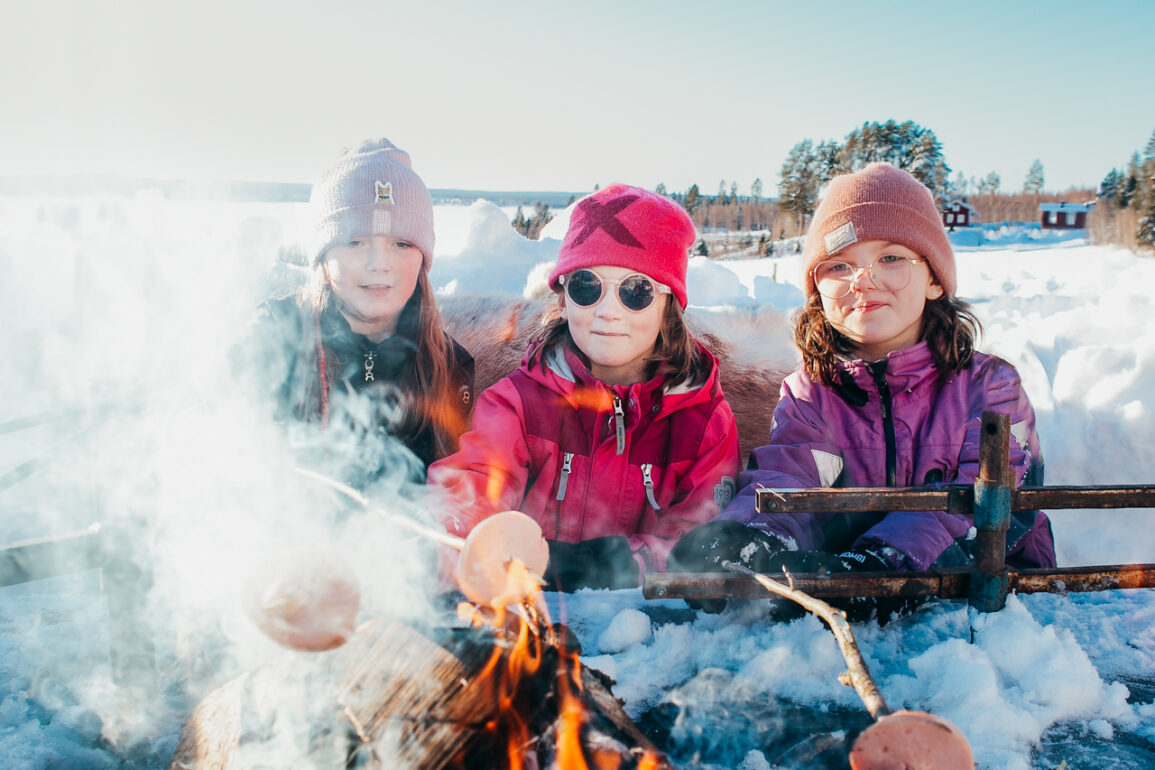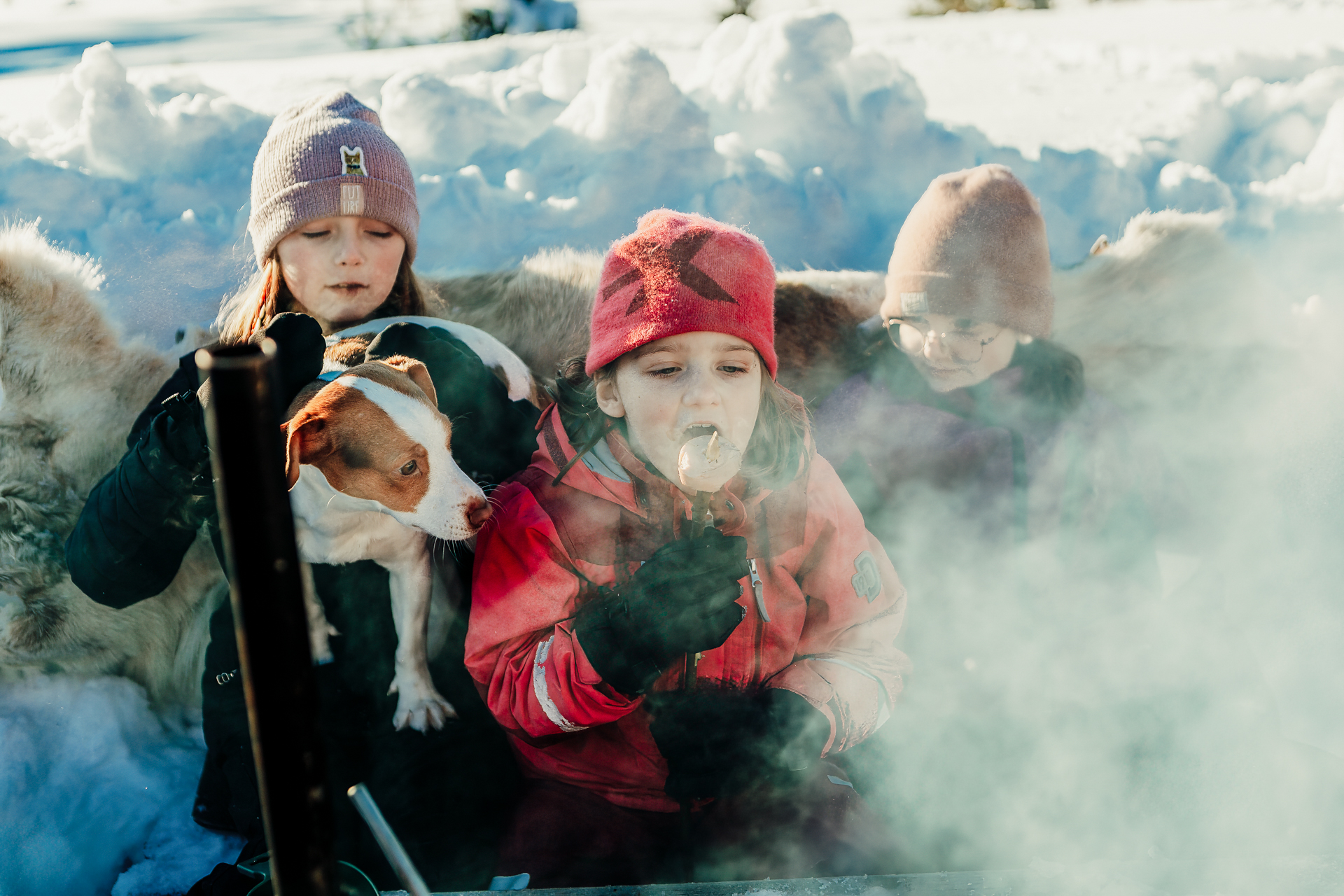Sandra Marklund from Skellefteå Museum immerses us in the cozy, northern Sweden traditions of Påsk – wrap up in a reindeer skin with a mug of hot chocolate and paint some eggs! Photographs by Donna Richmond.
The Swedish name for Easter is “påsk” and this is a holiday we really are keen on, because it finally means some days of vacation! The last couple of months have been fairly dark with not so many hours of sun, but now, all of a sudden, the sun is back: the Easter holiday is really the beginning of spring for us! We like to call it our fifth season, vårvinter, the spring-winter. This season, the fifth, has most probably been adopted by us from the Sami people, who have eight seasons!
Snow sofas!
So what do we do? We put our sunglasses on and stay outside from after breakfast until before dinner. Outside in the snow we dig sofas where we sit on reindeer skins, we have a fire lit and have lunch, coffee, hot drinking chocolate and cake.
When not sitting there just chatting and eating we might take a turn on a snowmobile, put on our skiing equipment – Alpine or Nordic skiing it makes no difference – or try some ice fishing. Children like to do that too, but maybe the most popular thing for kids to do is to be pulled on a sled or pulka by a snowmobile.
All this activity sometimes takes place at home, but it’s probably more common for us to spend our Easter holiday in a cabin that we ourselves, a close family member or a friend, owns.
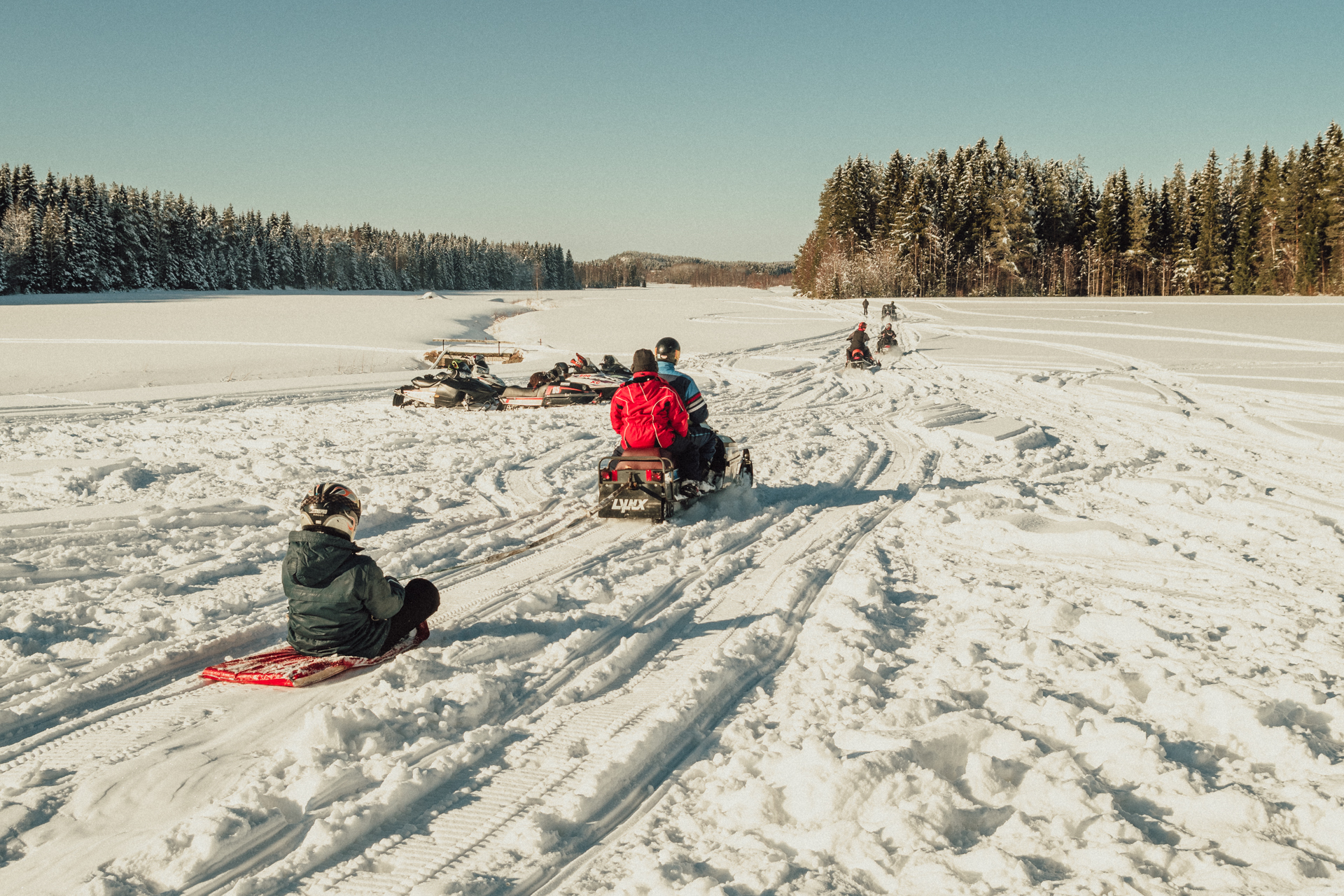
Going to the Swedish mountains is also quite popular during the Easter holidays, with bigger companies and unions having cabins and apartments in these resorts for the use of employees or members.
Things we eat outside can vary – grilled sandwiches, fried pancakes, waffles, fried spaghetti bolognese, kebab, sausages, hamburgers, pirogues and souvas/renskav are some of the things my family and I like to eat outside. Souvas is smoked reindeer meat which we usually eat together with salad in a pita bread.
After spending most of the day outside, with the warm sun (hopefully), snowmobile engines, fish, smoke and physical activity it’s nice (and much needed) to have a shower or maybe even a sauna if one is lucky to have one!
What’s cooking?
We tend to eat almost the same things on our two big holidays, Christmas and Easter. The Christmas root beer (julmust) has now been re-labeled to Easter root beer (påskmust). The påskmust accompanies meatballs, ham, salmon, sausages, herring, eggs, lamb, and don’t forget the quiche with Västerbottenost!
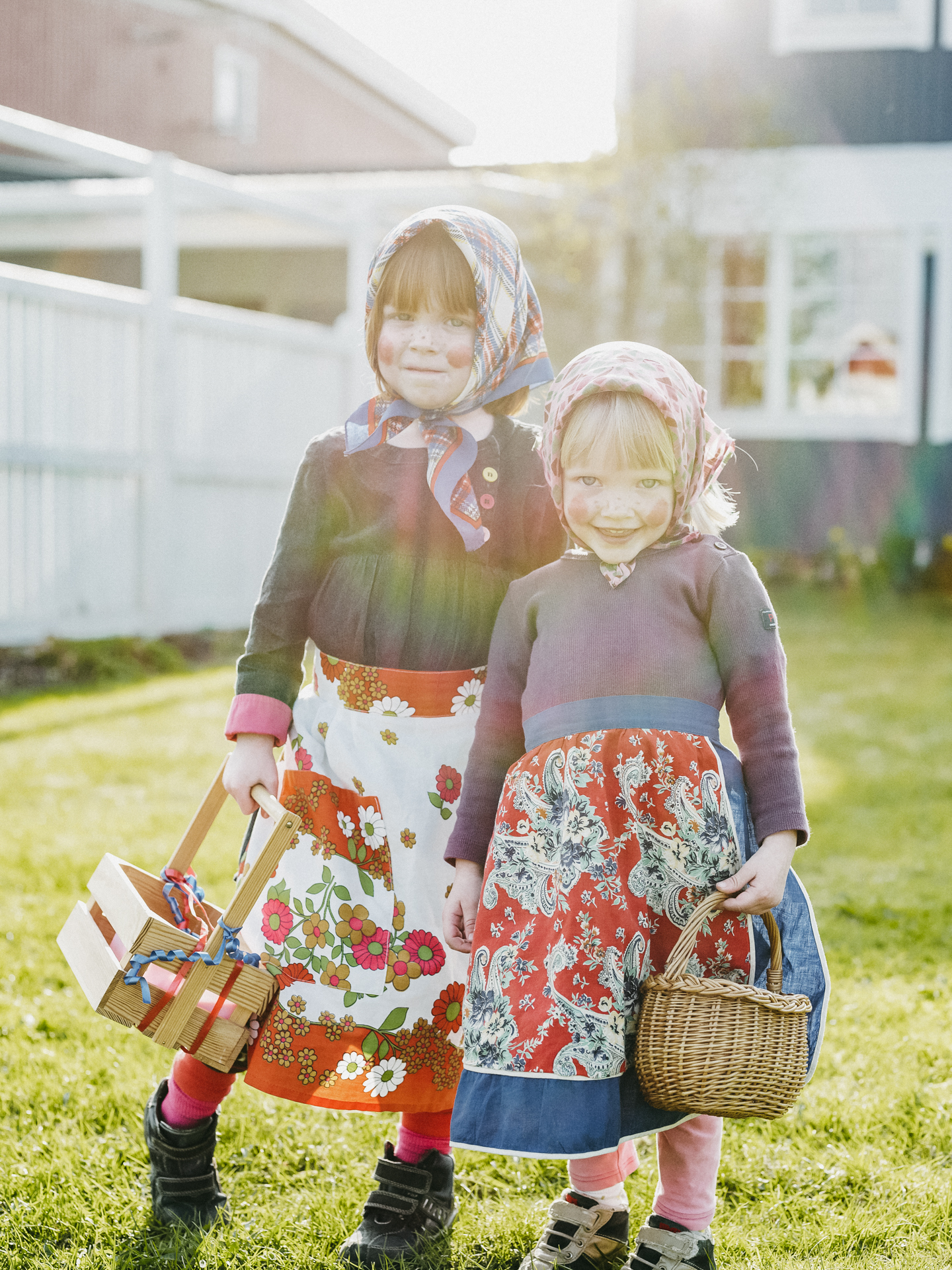
Rooster bunnies?
On Holy Thursday children dress up as witches carrying a broomstick and a coffee pot and go from door to door to receive candy. The broomstick is for traveling to Blåkulla (Blue Hill), a place where the Devil held his Earthly court during the witches’ Sabbath.
This is usually the day when the Easter Bunny comes with Easter eggs. The Easter Bunny tradition was imported from Germany and became popular during the beginning of the 20th century. When I grew up, the Easter Bunny would leave a big egg filled with candy. Around the egg the bunny would leave feathers and we would find the egg depending on the direction from which the bunny would make its rooster sounds.
These days my children demand an Easter egg hunt, which is sometimes a bit tricky to organize in the snow, since it can easily lead to frozen or lost candy.
In some regions of Sweden people light fires on this day, to scare the witches away, but this is something I never have seen in these parts during Easter.
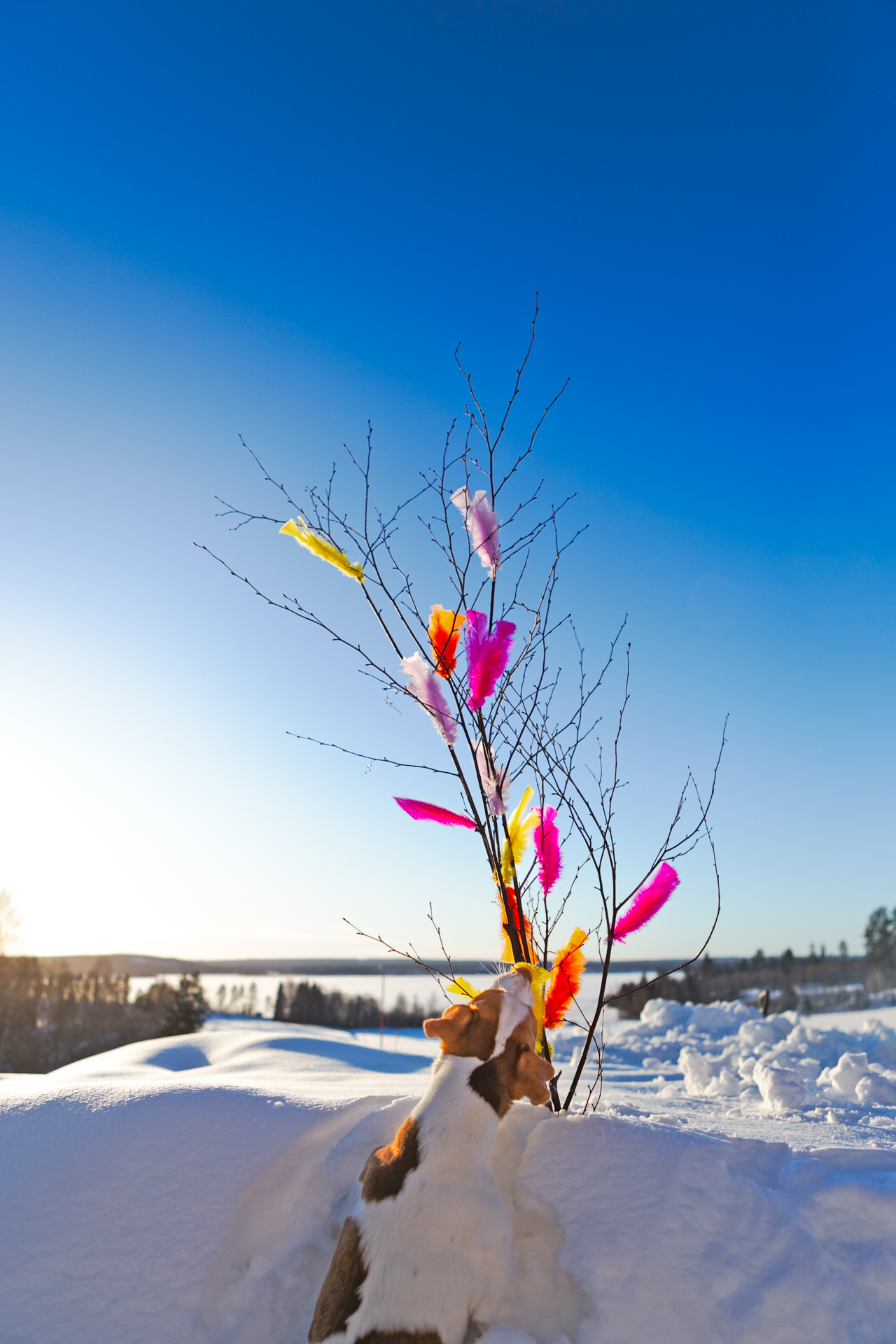
Decorations
When I was growing up some people around us would have special Easter curtains and tablecloths. In our household a must is to have branches of birch; these we have both inside and outside the house. On the outside branches we have colorful feathers; in the branches inside we also put feathers but also decorated blown-out eggs (eggs with their contents removed or blown-out). We also have some different kinds of roosters that we dot around the house.
The first flowers of spring that bloom in Norrland are the butterburs – they will usually come a couple of weeks after Easter, but luckily the stores will have Easter lilies, snowdrops, narcissus and other typical spring flowers ready for us.
Color your Easter eggs
I love to make craft flowers with my children. Our favorites are easy to make and mostly we only use things we already have, such as old egg-cartons and coffee-filters. Also they will last and spread joy for a long time. And of course, as mentioned, we also blow-out eggs and decorate them and hang them up on branches. We have hens and around springtime they start to lay an enormous number of eggs – we carefully selected our hens so we get a variety of colors on the eggs, so sometimes they don’t even need to be decorated.
With some vinegar and ingredients from your fridge or freezer you can color your eggs. This can be done on empty eggs or eggs that have already been boiled, but the procedure is the same.
Decide which color you would like to have:
Red cabbage = bluish color;
turmeric = yellow;
beets = pink;
blueberries = blue
Boil the water, add some vinegar and the preferred coloring ingredient. Let the water boil for a while, until the preferred color has formed. Turn off the heat and let the water cool. Add the eggs and let them stay in the water until they are the color you want. If you leave them in the pot for longer they will become more colorful but if you want a more subtle hue just leave them in for a short time. When you think they are done, take them out and let them dry. Enjoy!
Spring is nearly here
If you decide to spend Easter in town, and plan to visit a restaurant or do something else, make sure the things you wish to see and do are open. I once worked at the Icehotel in Jukkasjärvi. During the Easter holidays I remember we had a visitor from the southern part of Sweden who was surprised that so many shops and restaurants were closed in nearby Kiruna. We tried to explain that more than half of the inhabitants take their snowmobile or cars and go to remote cabins for a vacation during this holiday. So check the opening hours!
A childhood memory I have from Easter is that we always spent the holidays in my grandparents’ cabin in the mountains. When we returned the roads were free from ice and snow and I got to use my bike again. Spring had finally come.
